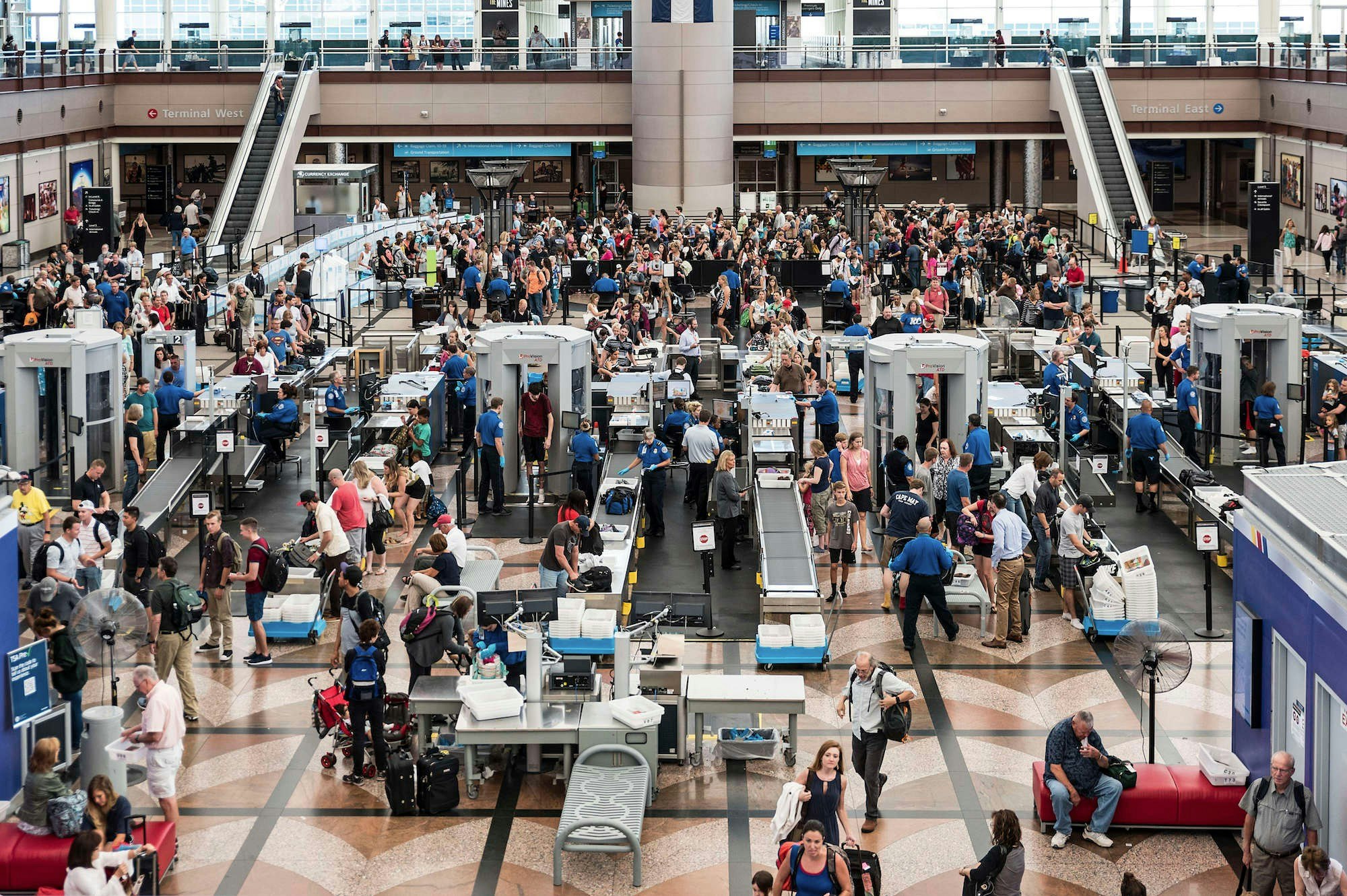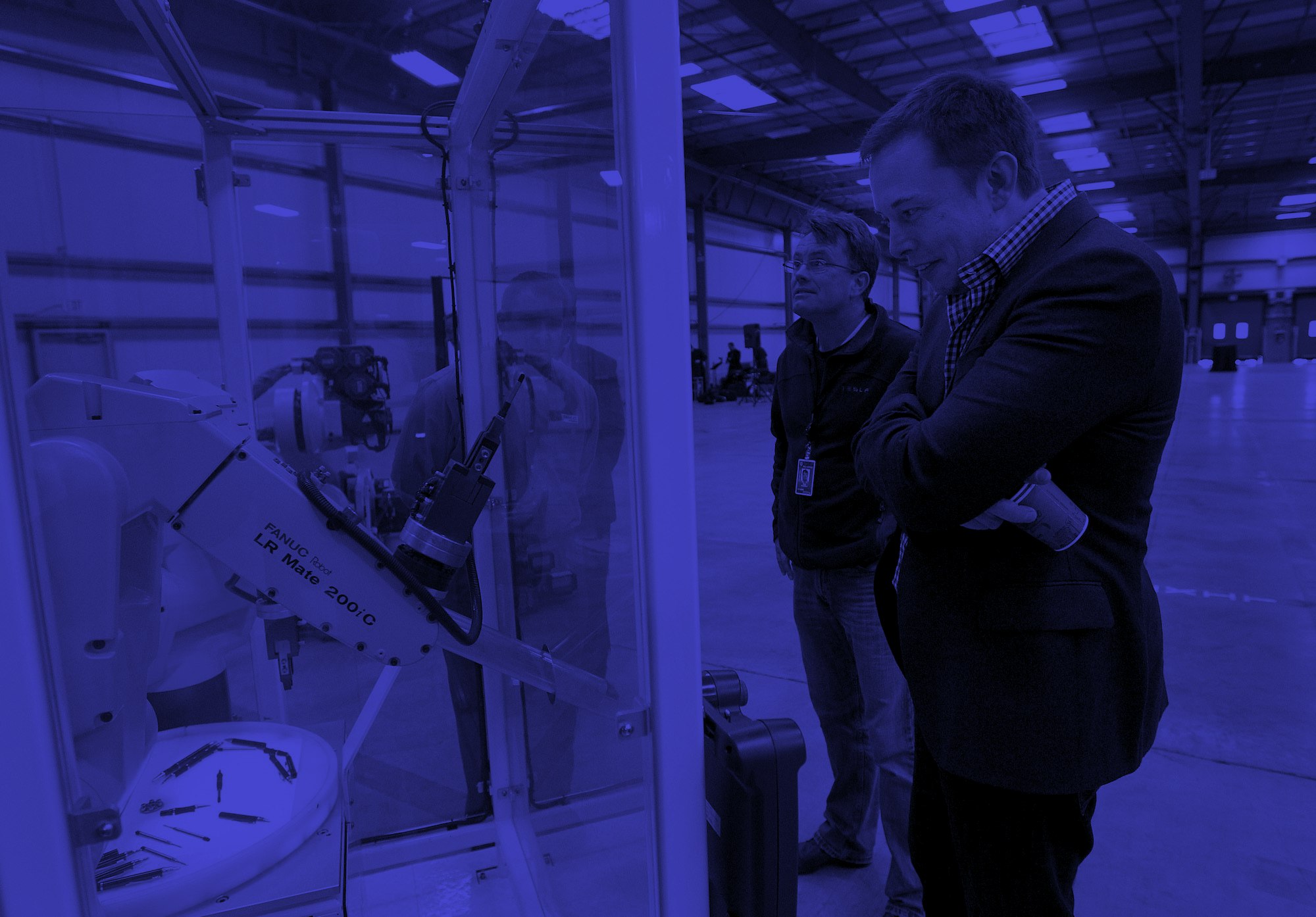More than any other industry today, the tech sector has an undeniable hold on the American public’s imagination. There is something alluring about the myth of Silicon Valley — the idea that the tech entrepreneur alone (well, with the help of an angel investor or startup incubator) could be responsible for the wealth and innovation of the digital economy. The government certainly has no place in this success story; if anything, government is the adversary, looking to stifle innovation at every turn with its dimwitted regulations and parasitical taxation. (This is no longer the controversial notion it once was, as Silicon Valley sit-downs with Presidents Obama and Trump will attest.) In her book Cyberselfish, technology journalist Paulina Borsook calls this the “technolibertarian perspective.”
According to technolibertarians like Elon Musk and Peter Thiel, the Silicon Valley ideal is infinitely scalable. Thiel wishes to “disrupt” aging and death altogether by putting his resources behind a series of life-extension startups. And Musk thinks he can innovate our species out of the way of its imminent extinction using free-market principles.
Of course, Thiel and Musk aren’t the only people who have ever thought this way. And this specific line of thought — that the tech sector can somehow be the engine of evolution that gets humankind off-world and into the solar system and beyond — goes back at least 40 years, to the ex-academic, counterculture gadfly, and enthusiastic LSD advocate Timothy Leary.
By 1980, Leary had become a counterculture icon, an international fugitive, a lodger in some of California’s finest penitentiaries, and eventually a resident of Beverly Hills. He had come far from his time as a young cadet at West Point and his subsequent career at Harvard researching psychedelic drugs. It was in this latter period that Leary’s theories emerged as a precursor to the weird transhumanist vision of Silicon Valley. In the 1960s, Leary’s pro-LSD jingle was “Turn On, Tune In, Drop Out.” In the 1980s, his vision could be summed up in one word: SMI2LE.
SMI2LE is an acronym that stands for Space Migration, Intelligence Increase, and Life Extension. First published in his book Terra II (1974), it’s a neat summary of Leary’s vision of the future of the human species, the next step in human evolution. If the millennia behind us had our biological ancestors climbing out of the water to dwell on land, the theory goes, the future will see us spread out to the stars. This was a dream of liberation for Leary — it’s not for nothing that he came to this conclusion while rotting away in prison. He had been given 20 years for marijuana possession. Leary was released in 1976, when Gov. Jerry Brown commuted his sentence after a little over six years (two years of which he spent as a fugitive).
When the first serious proposals for space migration were being drawn up in the early 1970s, it was obvious that this was an effort that wasn’t going to be achieved by individuals in private business. This would have to be a marriage of government (read: military) and corporate interests. If starry-eyed utopian dreamers wanted to go to the moon and beyond, they would have to work with NASA and the U.S. Air Force. They’d have to come up with a plan so damn profitable that the market would propel them into space.
One important influence on Leary at this time was Gerard O’Neill, a civilian scientist who applied to the Astronaut Corps in the mid-1960s. He never made it into space, but that never dampened his enthusiasm for the spacefaring potential of our species. In 1969, when teaching physics at Princeton, O’Neill posed the following question to his students: “Is the surface of a planet really the right place for an expanding technological civilization?” One presumes that he already had the answer, but at any rate, his students’ research confirmed it: no. It is not. The Earth is no place for an expanding technological civilization.
The Earth is no place for an expanding technological civilization.
O’Neill’s plan was laid out in testimony before the Congressional Subcommittee on Space and Science Applications in 1975, and expanded on by Leary in several essays appearing in his 1988 book, Neuropolitique. The basic idea was to establish a space station consisting of two concentric, six-mile-long cylinders that would house up to a million people and serve as a launchpad for space-based industry. Solar power would not only be used to power the space station — it would also be beamed back to Earth using microwaves, thus alleviating mankind’s reliance on fossil fuels. The eventual goal is to use this “inverted planet,” as O’Neill called it (humans live comfortably on the inside, while reaching outside to collect raw materials), as a way-station, a jumping-off point for the eventual colonization of the solar system and beyond.
Very quickly, O’Neill became disillusioned with government-funded research. In 1977, he co-founded the nonprofit Space Studies Institute at Princeton University. O’Neill’s dream was to have a fully functional city in orbit by the year 2000, but money for such an enterprise just wasn’t there (cost estimates ran up to $200 billion in 1975 dollars), and enthusiasm for space migration in government and among the general population burned out quickly. Among technolibertarians, however, space migration is still a persistent dream. To this day, SMI2LE sort of simmers in the background of Silicon Valley, its three principles cropping up repeatedly.
Probably most conspicuous is intelligence increase. On the whole, the intelligence of our species does seem to be increasing, if things like the increasing number of scientists, average lifespan, and technological advancement are any indicator. Also, there’s the perpetual fad of nootropics (“smart drugs”), which, the media will have you believe, always seem to be on the verge of delivering to the masses a revolutionary intelligence boost in a pill bottle or blister pack.
Among technolibertarians, space migration is still a persistent dream.
Life extension doesn’t just refer to the desire for ensuring longer life expectancies. A number of Silicon Valley luminaries, including Peter Thiel, Sergey Brin, and Larry Ellison, all think that death itself is a problem to be solved and can be solved by throwing money at it. Thiel made headlines early last year when he expressed a desire to start receiving transfusions of young people’s blood (an experimental procedure known as parabiosis), should the research ever bear out its effectiveness. But even if this particular technique goes nowhere, Thiel has made significant investments in anti-aging research, including a recent $3.5 million donation to biomedical gerontologist and anti-aging researcher Aubrey de Grey’s Methuselah Foundation.
Leary was pretty adamant that without space migration, life extension and intelligence increase are dead ends. What’s the use of being a super-genius if you’re left to roam a burnt-out planet, fighting the other super-geniuses for scraps? And life extension without space migration, he warns us, presents “the horrid possibility of John Denver and Frank Sinatra at age 500 still re-appearing at Las Vegas.”
You can’t discuss space migration these days without mentioning Peter Thiel’s fellow PayPal co-founder, Elon Musk. Like Leary before him, Elon Musk sees technological advancement as the way out of humanity’s most perplexing problems. And Musk is typical of the Silicon Valley technolibertarian crowd as he sees corporate innovation as the force that will either put the brakes on global climate change or, failing that, colonize Mars.
Musk is very typical of the Silicon Valley technolibertarian mold. He was happy to take a $465 million government loan for Tesla Motors, then soon after paying it off, he was more than happy to speak out against government subsidies like the one he just paid back. This has been Silicon Valley’s modus operandi for years, of course: promoting the tech sector’s independence from and superiority to mundane governance, while relying on it. In a nutshell, this is the reality behind the myth of the “free market.”
Myth or not, Leary makes it clear that the free market is crucial to his SMI2LE concept. In his essay “War and Centralization as Necessary Prelude to Space Migration,” he was kind enough to include the basic premise in the title, presumably because the premise alone was enough to convince the savvy reader that they could skip it. But failing to read his essays on space migration would be a shame, because you’d miss out on some classic Leary-Libertarian zingers, like:
-“Political ideology … as a goal of life is now out-dated [sic],” because “We Americans apparently prefer the televised popularity contest.”
-“A centralized consumer civilization is an inevitable evolutionary development.”
-“[T]he space migration movement would follow the history of migration to the New World in the 16th and 17th centuries.” [Just ask the native peoples of the Americas how that one turned out.]
-“Exploration and exploitation are genetic imperatives.”
To read Leary’s essays on space migration is to enter a time warp, a sort of plastic-fantastic retro future of cleanly scrubbed shopping malls locked in orbit at Lagrange points between the Earth and the Moon. One can imagine upper-middle class kids shopping for Timex Sinclair computers and Casio digital watches and Z Cavaricci pants, while their parents mine the Moon and passing satellites for the raw materials needed to seed the galaxy with ever more dysfunctional mini-Earths.
Leary’s writings on space migration, intelligence increase, and life extension may be flights of fancy, but they’re compelling and rich ones at that; far more so than I’ve been able to convey here. The reader might indeed get something out of them, but they’re clearly not sound blueprints for social engineering or species mutation or public policy. And the fact that Silicon Valley luminaries like Peter Thiel and Elon Musk are willing to promote the same ideas with little or no public scrutiny is worrisome. They may be some of our finest minds, but even geniuses can have very bad ideas.
The evils of corporate globalization and free-market capitalism run amok are well-studied and well-documented on this planet. Perhaps our geniuses here on Earth should try to solve those problems before exporting them to Mars and beyond.








